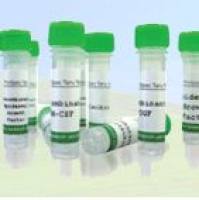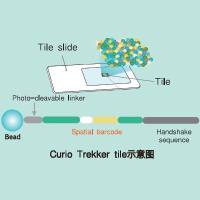An Improved Method for Mapping Epitopes of Recombinant Antigens by Transposon Mutagenesis
互联网
726
Epitope mapping of proteins defines the structural elements of a molecule needed for recognition by individual antibodies. X-ray crystallography of anti- body-antigen complexes ( 1 ) is perhaps the most precise means of defining an epitope. However, several quicker but less detailed methods are also available. These alternative approaches include fragmentation of the antigen by chemical or proteolytic cleavage ( 2 ), chemical synthesis of peptide fragments ( 3 ), competition between antibodies ( 4 ), protection by antibody against proteolytic cleavage ( 5 ) or against chemical modification ( 6 ), and natural variants in different tissues or species ( 7 ). With antigens expressed from cDNA in bacterial plasmids, antigenic fragments can be produced by deletion mutagenesis with restriction enzymes ( 8 ) or exonucleases ( 9 ), and by construction of epitope libraries of random cDNA fragments in bacteriophage ( 10 ) or plasmid ( 11 ) vectors. Site-directed mutagenesis can be used to define important amino acid residues in epitopes ( 12 ). These methods, however, involve extensive in vitro manipulations or are limited by available sites within the cloned sequence. A simple and inexpensive in vivo alternative ( 13 ), which is not constrained by restriction site availability, uses the bacterial transposon, Tn 1000 ( 14 ), to interrupt a coding sequence. Tn 1000 introduces early termination codons and, hence, generates a library of clones expressing N-terminal protein fragments with progressively fewer epitopes as they get shorter (Fig. 1 ).
Fig. 1. Epitope mapping by transposon mutagenesis. A hypothetical protein is diagrammed at the top of the figure. The coding sequence is truncated by transposition and the sites of insertion are determined by transposon-primed DNA sequencing The predicted sizes of the N-terminal fragments of the target protein are ranked in decreasing size. The N-terminal fragments are expressed in E. coli and tested for recognition by a panel of MAbs. Epitopes are mapped by the colinearity between the increasing sizes of the truncated protein fragments and the increasing numbers of MAbs that recognize them.






